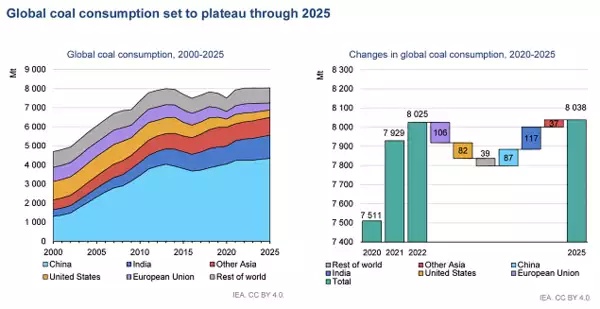Introduction:
In a world at the crossroads of environmental sustainability and energy needs, the dynamics of global coal demand stand as a critical focal point. As nations grapple with the complexities of balancing economic growth and environmental stewardship, the role of coal in the global energy landscape is under intense scrutiny. This blog aims to explore the intricate web of factors influencing global coal demand, examining both the challenges and opportunities that lie ahead.
Historical Perspectives:
Coal has been a stalwart in the global energy mix for centuries, fueling the industrial revolution and powering economic development. However, in the 21st century, the narrative surrounding coal has evolved. While it remains a significant source of energy in certain regions, concerns about its environmental impact, particularly in terms of greenhouse gas emissions and air pollution, have sparked a global conversation about transitioning to cleaner alternatives.
Economic Development vs. Environmental Concerns:
One of the central debates surrounding global coal demand revolves around the tension between economic development goals and environmental sustainability imperatives. Developing nations often rely on coal to meet their growing energy needs and fuel industrialization. Striking a balance between uplifting communities through economic development and mitigating the environmental consequences of coal combustion is a delicate challenge faced by policymakers worldwide.
Renewable Energy Transition:
The global push towards renewable energy sources poses a significant threat to traditional coal-centric energy systems. As countries commit to reducing carbon emissions and embracing cleaner energy alternatives, the demand for coal is expected to decline. The rapid advancements in solar, wind, and hydropower technologies present viable and sustainable alternatives, making the transition away from coal both feasible and imperative.
Role of Technology in Mitigating Environmental Impact:
In the face of mounting environmental concerns, technology emerges as a potential game-changer. Advanced technologies such as carbon capture and storage (CCS) offer a glimmer of hope for coal-dependent regions. By capturing carbon dioxide emissions at the source and storing them underground, CCS has the potential to reduce the environmental footprint of coal-fired power plants. However, the widespread implementation of such technologies requires significant investment and infrastructure development.
Shifting Dynamics in Global Energy Markets:
The dynamics of global coal demand are intricately linked to geopolitical and economic factors. Fluctuations in energy prices, regulatory policies, and international collaborations play a crucial role in shaping the trajectory of coal consumption. The rise of liquefied natural gas (LNG) as a cleaner and more flexible energy source further adds complexity to the global energy landscape, influencing decisions on coal investments and usage.
Impact of Environmental Activism and Public Opinion:
Environmental activism and heightened public awareness have catalyzed a shift in societal attitudes towards coal. Concerns about air quality, water contamination, and the long-term effects of climate change have mobilized communities to advocate for cleaner energy alternatives. As public opinion increasingly leans towards sustainable practices, governments and industries face pressure to reassess their reliance on coal and invest in greener solutions.
Coal's Persistent Role in Asia:
While many developed nations are transitioning away from coal, Asia, particularly China and India, continues to play a pivotal role in global coal demand. These nations, home to a significant portion of the world's population, rely on coal for energy security and economic growth. Understanding the dynamics of coal demand in Asia is essential for a comprehensive analysis of the global landscape.
Conclusion:
The future of global coal demand is at a crossroads, influenced by a myriad of factors ranging from economic considerations and technological advancements to environmental imperatives and public sentiment. Striking a balance between meeting energy needs and embracing sustainable practices is a challenge that demands collaborative efforts from governments, industries, and communities worldwide. As we navigate the complex terrain of energy transitions, the decisions made today will shape the course of our environmental legacy and determine whether coal remains a dominant player or yields to the forces of a cleaner, greener energy future.
More market research, advisory consulting services to discover
At Eninrac, we offer a wide range of, advisory consulting solutions, from We put ‘search' in research to help expand your business with ease. Discover all the possibilities now.


No comments yet